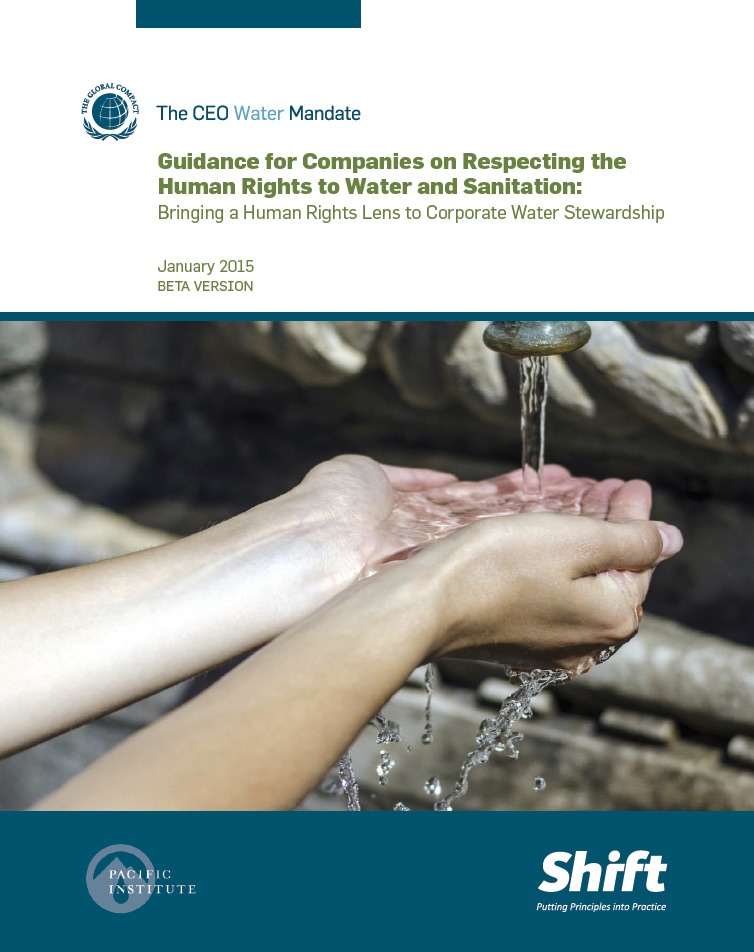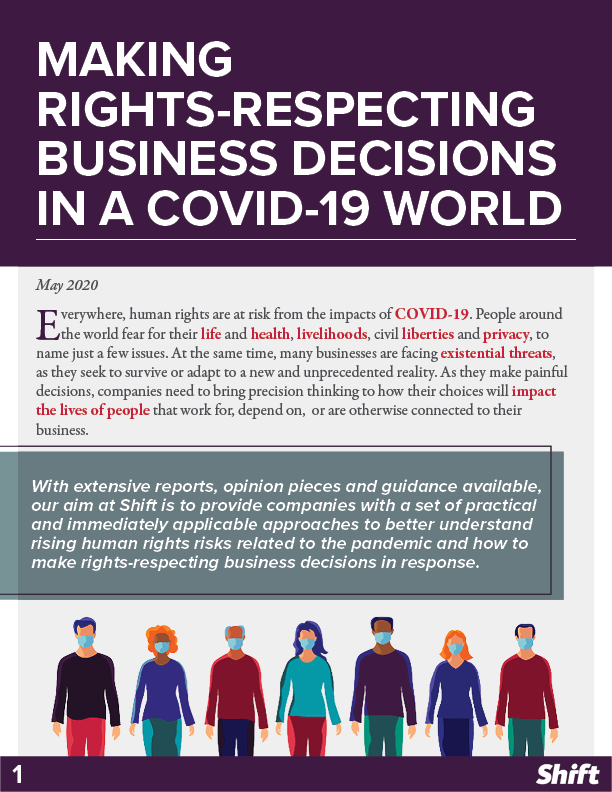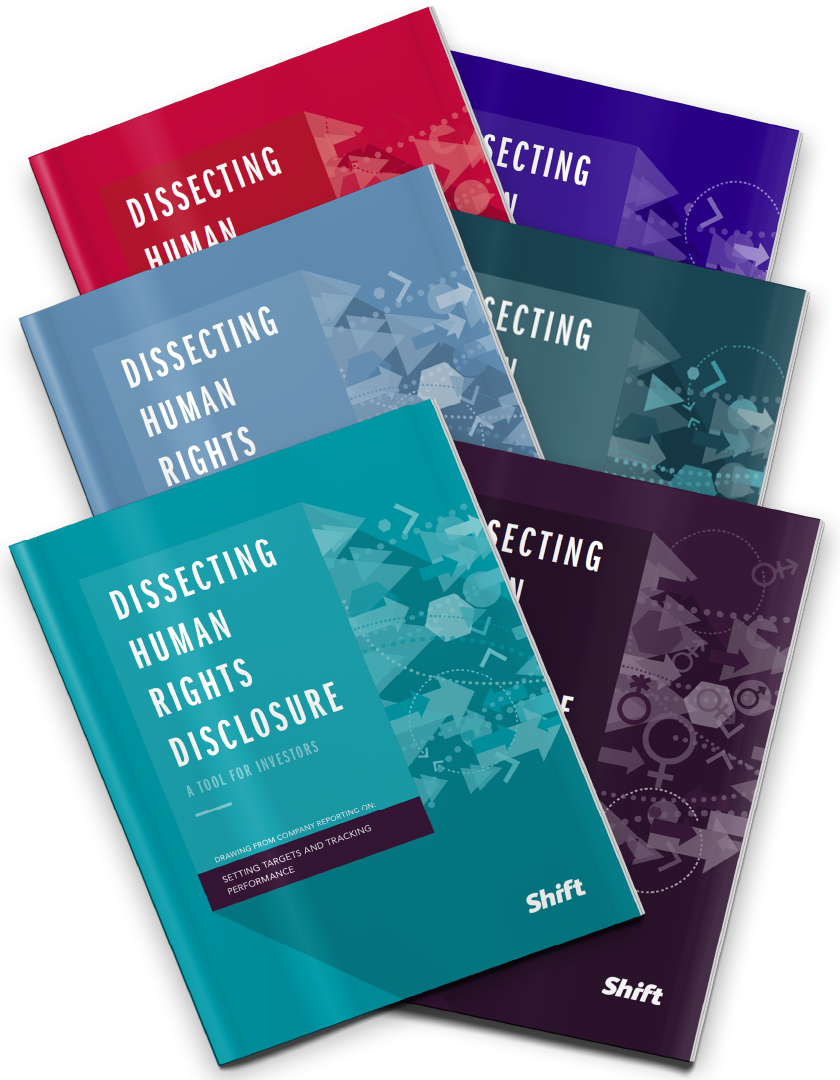This guidance was developed with input from companies participating in the UN Global Compact’s CEO Water Mandate. | Learn more about the collaboration.
The summary below is excerpted from the resource.
Summary
This guidance aims to help companies (particularly heavy water users) translate their responsibility to respect the human rights to water and sanitation (HRWS) into their existing water management policies, processes, and company cultures.
What are the rights to water and sanitation?
- The human right to water entitles everyone to sufficient, safe, acceptable, physically accessible, and affordable water for personal and domestic (household) use.
- “Sanitation” is defined as a system for the collection, transport, treatment, disposal, or reuse of human excreta and associated hygiene. The human right to sanitation entitles everyone to sanitation services that are safe, socially and culturally acceptable, secure, hygienic, physically accessible and affordable, and that provide privacy and ensure dignity.
The main audiences for this guidance are staff with responsibility for human rights and those with responsibility for water stewardship within companies. Both large and small companies should find the guidance useful, but it should be particularly relevant for those with heavy water use in their operations.
In addition, the guidance should be of use to other stakeholders, including representatives of states, civil society organizations working on water and sanitation or on broader human rights issues, investors, international organizations, and others who have an interest in supporting, incentivizing, or requiring companies to meet their responsibility to respect the HRWS.
Translating Impacts on People Into Human Rights and Water Stewardship Terms
What is different when a company brings a human rights lens to its water management efforts? At its core, this means focusing on water-related risks to people rather than water-related risks to the business. This means that company efforts to understand their actual and potential impacts need to take full account of the severity of such impacts on “affected stakeholders,” as defined in the Guiding Principles. This could include workers, local community members, or other individuals or groups whose rights may be negatively affected. These impacts may involve the HRWS, but they may also have an effect on other human rights, such as the rights to health, life, and food. They may also have particular implications for individuals or groups who are at heightened risk of marginalization or vulnerability, who are entitled to additional protections under international human rights law.
Many impacts on the HRWS start as less severe social or environmental impacts, so it can be helpful to consider impacts as existing on a continuum. Preventing less severe social or environmental impacts can therefore help prevent negative impacts on the HRWS, as well as prevent negative impacts on other human rights.




